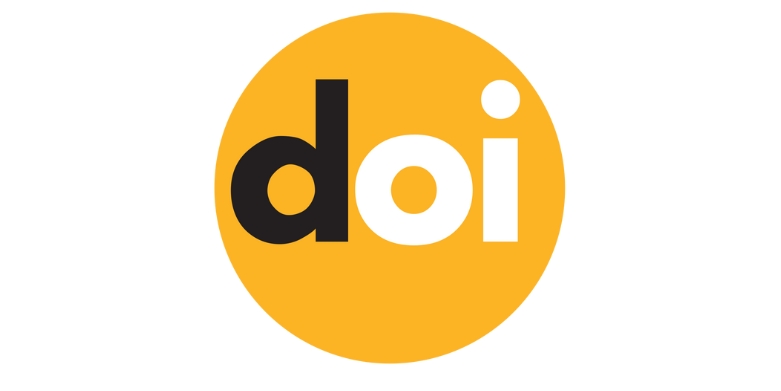Quality of Work Life and Mental Health: Investigating the Link in a Correlational Framework
DOI:
https://doi.org/10.63053/ijhes.138Keywords:
Quality of Work Life, Mental Health, Depression, Anxiety, StressAbstract
Mental health is a critical factor in employees’ overall well-being and performance, especially in high-demand industrial environments. Quality of work life, as a key organizational variable, can significantly influence psychological outcomes in the workplace. This study aimed to investigate the relationship between quality of work life and mental health among employees in a large industrial context. The statistical population included 12,500 employees of the steel industries in Isfahan in 2022, from which a sample of 348 individuals was selected through convenience sampling. The research method was descriptive-correlational. Data were collected using the Work-Related Quality of Life Scale (WRQoL-2) and the Depression, Anxiety, and Stress Scale (DASS-21). The Pearson correlation coefficient was used to analyze the data. The results indicated a statistically significant negative correlation between quality of work life and mental health components: depression (r = -0.269, p < 0.001), anxiety (r = -0.307, p < 0.001), and stress (r = -0.299, p < 0.001). These findings suggest that as employees’ quality of work life improves, their levels of depression, anxiety, and stress decrease. The study emphasizes the importance of enhancing work-life quality as a strategy to improve employees’ psychological well-being.
References
• Antony, M. M., Bieling, P. J., Cox, B. J., Enns, M. W., & Swinson, R. P. (1998). Psychometric properties of the 42-item and 21-item versions of the Depression Anxiety Stress Scales in clinical groups and a community sample. Psychological Assessment, 10(2), 176–181. https://doi.org/10.1037/1040-3590.10.2.176
• Bakhshi, A., Azam, K., & Darvishi, S. (2018). The relationship between quality of work life and psychological well-being among industrial employees. Iranian Journal of Occupational Health, 15(4), 72–81.
• Carmichael, F., Fenton, S. J., Pinilla-Roncancio, M., Sing, M., & Sadhra, S. S. (2021). Workplace mental health: Employer responsibilities and effective interventions. Occupational Medicine, 71(3), 101–108. https://doi.org/10.1093/occmed/kqaa229
• Cetrano, G., Tedeschi, F., Rabbi, L., Gosetti, G., Lora, A., Lamanna, D., & Fiorillo, A. (2017). The economic case for improving mental health and well-being in the workplace: A systematic review. Journal of Occupational Health, 59(3), 219–233.
• Easton, S., & Van Laar, D. (2018). Quality of working life questionnaire manual: WRQoL scale. Portsmouth, UK: Portsmouth University.
• Farhadi, A., Ghazanfari, F., & Haghdoost, M. (2015). Job stress and its relation with mental health among Iranian industrial employees. Journal of Occupational Health Psychology, 12(2), 89–97.
• Goda, M., Kobayashi, M., & Fukuda, T. (2023). Exploring the relationship between quality of work life and mental health among factory workers: A cross-sectional study. Journal of Occupational Health Psychology, 28(1), 14–25. https://doi.org/10.1037/ocp0000322
• González-Baltazar, R., López, A., & Navarro, A. (2018). Quality of work life and emotional well-being in Mexican industrial settings. Journal of Work and Organizational Psychology, 34(2), 100–110.
• Inarda, H. (2022). Work-life balance as a predictor of job satisfaction and mental health. Journal of Management Studies, 60(1), 48–58.
• Karatepe, O. M., Yavas, U., Babakus, E., & Deitz, G. D. (2021). The effects of high-performance work practices on burnout, turnover intentions, and job performance: Evidence from frontline employees in tourism. Journal of Business Research, 132, 476–486.
• Knofczynski, G. T., & Mundfrom, D. J. (2008). Sample sizes when using multiple linear regression for prediction. Educational and Psychological Measurement, 68(3), 431–442. https://doi.org/10.1177/0013164407310131
• Kuhn, T. (2013). The social reality of mental health in the workplace: Deviant responses and organizational climate. Work and Stress, 27(3), 275–290.
• Lovibond, S. H., & Lovibond, P. F. (1995). Manual for the Depression Anxiety Stress Scales (2nd ed.). Psychology Foundation.
• Mazloumi, A., Rostamabadi, A., & Saraji, G. N. (2017). Psychometric evaluation of the Persian version of the Work-Related Quality of Life Scale. Journal of Occupational Health, 59(2), 125–132.
• Mirkamali, S. M., & Thani, F. N. (2011). The relationship between quality of work life and job satisfaction of faculty members in Tehran University. Procedia - Social and Behavioral Sciences, 29, 1790–1794.
• Saidykhan, S. B., & Ceesay, E. A. (2020). Work-life satisfaction and well-being among public employees in The Gambia. African Journal of Human Resource Management, 8(1), 1–10.
• Uzonwanne, F. C., & Ijide, C. (2017). Work-family conflict and mental health in Nigeria’s public sector: The moderating role of organizational support. Public Organization Review, 17(3), 317–330.
• World Health Organization. (2004). Promoting mental health: Concepts, emerging evidence, practice (Summary Report). Geneva: WHO.
• Zhang, M., Zhang, J., Zhang, F., Zhang, L., & Feng, D. (2016). Work environment and mental health: Understanding the associations in the Chinese manufacturing industry. International Journal of Environmental Research and Public Health, 13(11), 1121. https://doi.org/10.3390/ijerph13111121
• Zia, R., Mirza, M., & Shahid, R. (2021). Mental health and occupational stress in industrial workers: Evidence from Pakistan. Occupational Medicine Quarterly, 18(2), 55–64.
Downloads
Published
How to Cite
Issue
Section
License
Copyright (c) 2025 Authors

This work is licensed under a Creative Commons Attribution 4.0 International License.
The journal is licensed under a Attribution 4.0 International (CC BY 4.0).
You are free to:
- Share — copy and redistribute the material in any medium or format for any purpose, even commercially.
- Adapt — remix, transform, and build upon the material for any purpose, even commercially.
- The licensor cannot revoke these freedoms as long as you follow the license terms.
Under the following terms:
- Attribution - You must give appropriate credit , provide a link to the license, and indicate if changes were made . You may do so in any reasonable manner, but not in any way that suggests the licensor endorses you or your use.
- No additional restrictions - You may not apply legal terms or technological measures that legally restrict others from doing anything the license permits.












